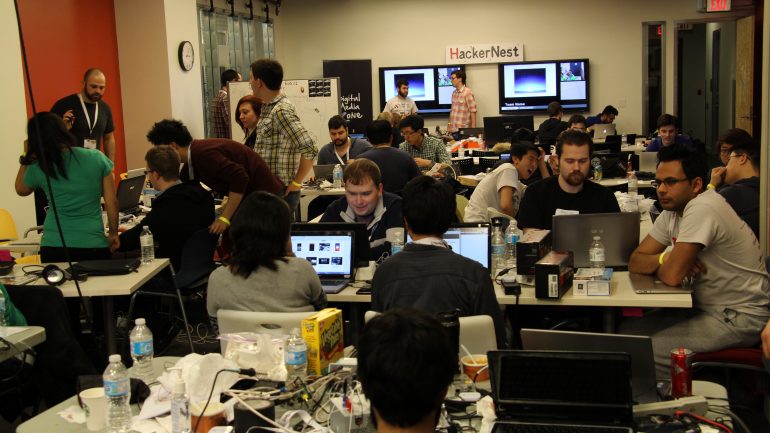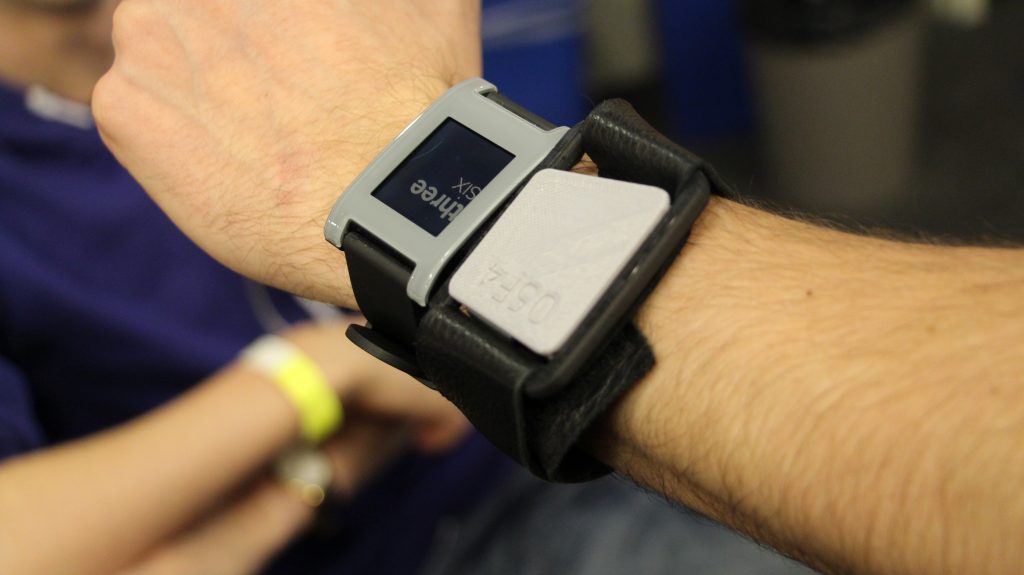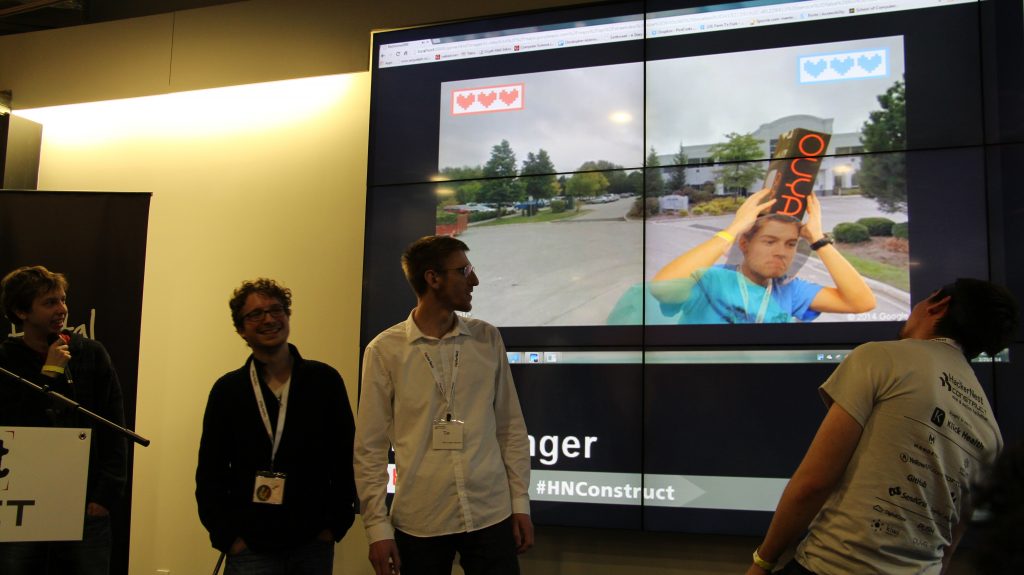Toronto-based HackerNest isn’t one to play by the rules. Most known for their beer-driven tech socials, the non-profit group has found success in stripping away all the formalities usually associated with business events and instead makes them raw, relaxed and down-to-earth. This was especially the case for its Mind & Motion hackathon, which wrapped up yesterday.
The fun and energetic feel of any HackerNest tech social could immediately be felt when you entered the Ryerson Digital Media Zone where the hack took place. In talking with participants and organizers, this had a lot to do with the way the event was organized. Unlike other hackathons which focus as much on the business case as they do a working product demo, Mind & Motion’s end goal was set entirely on creativity and the innovative use of technology. In their words “we don’t give a crap about business plans or commercial viability”.
Not having to worry about creating a PowerPoint slide deck freed a lot of the teams up both in terms of the ideas they could explore and the time they could use to create a working product. And as Mind & Motion was entirely focused on next-generation hardware including iBeacons, Arduino, Pebble smartwatch, Kiwi Move and Leap Motion, teams needed all the time they could get to prepare for their demo.
Ironically, encouraging teams to create products based on play, curiosity and innovation may have inspired some quality startup ideas despite the lack of focus on a business plan out of the gate. “We always seem to want a business model out of it, but if you are passionate about something and you build something awesome, someone else will find it awesome and a business model will emerge,” co-founder of Kiwi Wearables, Ashley Beattie, told us at the event. “Sometimes the best ideas happen when people are just messing around and having fun”.
And there were nothing but great ideas showcased in the sixteen final demo presentations at the end of the hack. Mind & Motion’s winning team, Team “Josh”, showed how equipping remote control cars with Raspberry Pi could turn a solitary experience into a social phenomenon. Josh hacked an RC car so that it got its marching orders from crowdsourcing via a companion website which asked users to vote for which direction the car should move next. The direction with the most votes would move the car accordingly.
Runner-up, Team “Axiom”, treated the audience to a futuristic symphony made up of their stringless instruments which took “air guitar” to the next level. Using ultrasonic sensors and Raspberry Pi, the team was able to create a series of gesture-based instruments (a violin and a cello) which use the movement of your hand to understand the notes it should be producing. When a user mimed the movement of a bow and placed their fingers in the proper note configurations, the sensors used this input to play the right digital audio files.
The use of gesture was a common element in most of the projects coming out of the Mind & Motion hack. Many of the teams used either the Kiwi Move, a wearable which tracks your body’s motion, or the Leap Motion, a computer accessory which tracks the movement of your hands in three-dimensional space, as a basis for their solution. Although the use of gesture elevated a lot of ideas to a whole new level, it was clear, from some of the hiccups during the demos, that this new computing input brought with it a series of complications and complexities which made it difficult to develop for.
Some of the Kiwi-based projects included Team “ISIS” who used the unreleased Move to track cooking movements like whisking, stirring, kneading etc. to teach users how to be a better cook. And Team “The Hacks” who combined the Move with Apple’s iBeacon and the Pebble smartwatch to create a gym system that identifies the machine you are on, tracks your activity specific for that exercise and then displays that information on your wrist using the smartwatch.
Team “Headbangers”, who created an app of the same name, also used the Kiwi Move to create a location-based social game which lets you literally smash your opponents with your head to win (whiplash included). The Headbangers went on to win best use of the YellowPages API which they leveraged to help people find others to play against within the game.
The Mind & Motion hackathon teams were judged based on use of tech, creativity, functionality and of course the ever important cool factor. The winner took home $2,500, the runner up $1,337 and several other prizes were handed out at the event including 36 Datawind Ubislate tablets and an Oculus Rift.






